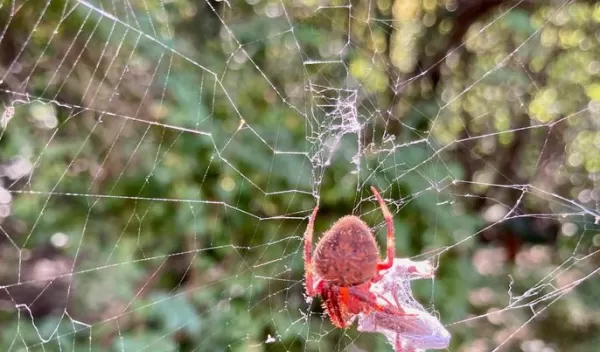
New study reveals that tree species diversity increases spider density
Spiders are often maligned for being creepy critters, but they are some of the most environmentally friendly pest regulators. Because they actively feed on flies, moths, mosquitoes and roaches, spiders eliminate parasites and many other vectors of disease — protecting both humans and plants from harm.
A U.S. National Science Foundation-supported study led by scientists at the University of Maryland and published in the journal Ecology found a simple way to take advantage of this ecosystem service: give tree-dwelling spiders a more diverse habitat. "This research highlights the relevance of biodiversity studies to a better understanding of the factors impacting ecosystem function," said Andrea Porras-Alfaro, a program director in NSF’s Division of Environmental Biology. "The work will provide useful information to forest management practices that take advantage of natural predators."
The researchers found a strong link between the species diversity of tree habitats and the population density of the spiders that live in them, according to Karin Burghardt, senior author of the study. "Spiders really like complex habitats, so having a large variety of tree species with different structural features like height, canopy cover and foliage density will help increase spider abundance and also the natural pest regulation they provide."
The researchers found the strongest relationship between tree diversity and spider populations during the late summer months when average temperatures were at their highest. Spider populations increased more dramatically than those in the single species plots during late August, which could partially be due to spiders' extreme sensitivity to heat.
As average temperatures continue to rise due to climate change, populations of tree-feeding insect pests and occurrences of deadly diseases transmitted by pests like mosquitoes and ticks will likely also steadily increase.
Designing landscapes that support spiders and other beneficial bugs can offer economically and environmentally sustainable ways to counter this trend. With the results of this study, Burghardt and the team hope to inform stakeholders that land management decisions like tree planting can help keep ecosystems healthy and balanced.
"There have been some large-scale tree diversity experiments conducted in Europe and Asia, but our study is one of only a handful of experiments of its kind in temperate North America," Burghardt said. "With this research, we’re discovering crucial information about our ecosystems, especially regarding how they react to both climate change and restoration efforts."
